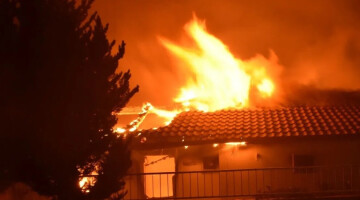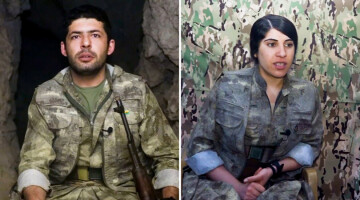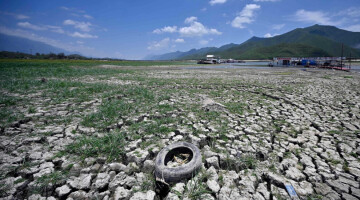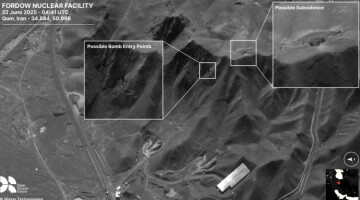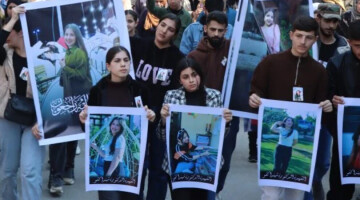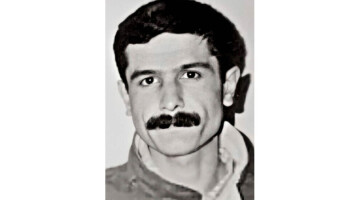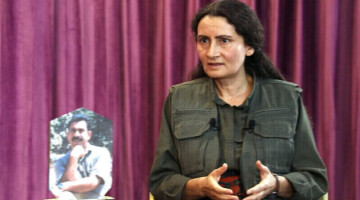Last month we entered the 41st year of the armed struggle against the occupation and colonialism in Kurdistan. What did the guerrilla not fit into each day of these 40 years? If only the rush of the war had not been so intense or the war had not been so ruthless, each day of this war could have been written one by one. Guerrilla warfare is a 40-year fiery run in which every day gives birth to a hero and every minute is worth a lifetime.
They never fought randomly, they were not traditional rebels or a group of armed propagandists. They were never three or five marauders, as was claimed by the fascist Turks, whose knowledge was not enough to prove them wrong. The guerrilla fighters and commanders took the war seriously and pondered the art of war. The guerrilla army, which developed a counter-move against every move of the enemy, a defence against every attack, also displayed a tremendous tactical mastery in 40 years. Every tactic developed and implemented became one of the pillars that led the guerrillas to success. The tactical insight of each period also determined the character of the war of that period.
The guerrilla resistance, especially since April 2021, has gained a unique character of war, unlike other years. Guerrilla commanders described this as ‘the first time that such long-term resistances have developed in the same fighting position’. In other words, those tremendous resistances that took place in the war tunnels... The resistances that lasted for 10 days in Mamreşo, 80 days in Hill Sor, 120 days in Werxelê and now for 3 years on almost every hill in Şehîd Delîl West Zap region... There is also the resistance in the Şehîd Doğan war tunnels in the Sîda region, east of the Zap, which changes even the enemy's view of the guerrilla and makes even the enemy take off their hats.
In East Zap, the ‘long-lasting resistance that continued for years in the same position’ mentioned by guerrilla commanders took place in the Şehîd (Martyr) Doğan War Tunnel. They resisted for three years, in a position that was initially built only as a living tunnel. In this position, which had not yet turned into a war tunnel, they both struck the enemy and turned their tunnel into a war position in the process. This was the most meaningful and important aspect of the resistance in the Şehîd Doğan War Tunnels. When the enemy advanced into the tunnels, the guerrillas did not say, ‘This is not a fighting position anyway’ and did not surrender to their fate. For three years, they did not once say, ‘This place is not suitable, let's not fight, let's get out’.
On the contrary, Alan Milazgîr, a guerrilla commander of 30 years who was in that position during the days of resistance, confronted the efforts to get him out of there. He resisted shoulder to shoulder with his young comrades and the fighters he had trained himself. This was just one of the resistances that negated the false propaganda of the fascist Turkish state's special war media. Now there are dozens of examples, dozens of living heroes resisting in these tunnels like comrade Alan.
The enemy constantly argued that the guerrillas’ commanders ‘retreat to safe areas, live in pleasure and enjoyment, and make the poor deceived youngsters fight in the front positions.’ Where was Alan Milazgîr when he was martyred? In which battle position did Berwar Dersim fall a martyr? I wonder what kind of pleasure and enjoyment Şexmûs Milazgîr was in when he breathed his last breath in Serhed? Why did Bêrîtan Nurhak Çiya blow herself up among the enemy forces if she had retreated to a safe area? As we said, what the Turks know is not enough for them to be wrong.
One of the lies spouted by the special war media was that the guerrillas were being held in these positions by force and forced to fight. Their most outrageous elements were entering the tunnels in some occupied areas and drowning in their own lies. Every day they entered some tunnels in areas that had been hit by warplanes, attacked with chemical gases consisting of a mixture of salt spirit and bleach, which decomposes and dissolves everything, bombed with thermobaric explosives, and where the guerrillas had not been for years, and said, ‘This is how they live,’ with a grimace. Knowing that what is nauseating is their own ugliness, meanness, war crimes and lack of culture...
One of the commanders who insisted on resisting in the Şehîd Doğan War Tunnels with commander Alan Milazgîr was Sara Tolhildan. While comrade Sara was still resisting, we received some images taken in the tunnels in those days. The most meaningful answer to the lies spread by the special war media about the tunnel resistance was Sara's speeches in those tunnels, her smile full of hope and life, spreading on her face in those difficult conditions.
If they are being held against their will, if they are being forced to fight and if they are forced to live in conditions that no human being can live in, how can Sara laugh so sincerely? How can she remain so hopeful and determined? If everything is ‘forced’, how can Sara show such a voluntary will? If this resistance is just an instruction, how is it that Sara digs tunnels with her fingernails and throws soil with her palms in order to resist there for one more day? Yes, that's why I say, what they know is not enough for them to be wrong. What the ignorant fascist hordes know is never enough to understand the world of the guerrilla resistance.
Those who listen to Sara's assessments of the resistance in the tunnels and see the hope that spreads across her face during those assessments can understand what these resistances really mean. Those who not only look, but also know how to see, can understand what the guerrilla's resistance in those tunnels is really about. Those who understand Sara can also understand the true meaning of the revolution.




